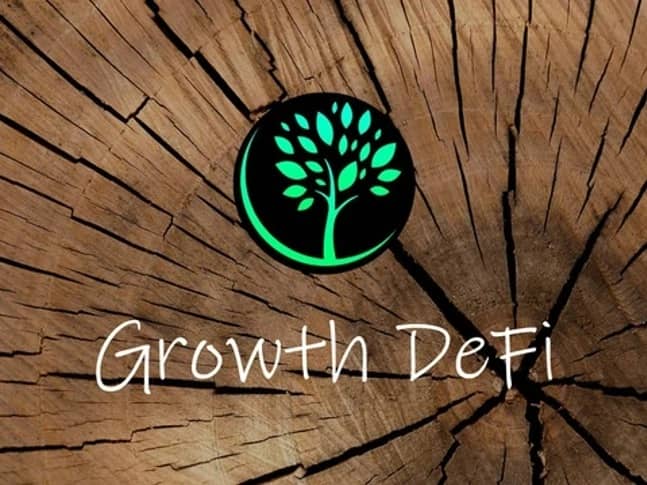위키 구독하기
Share wiki
Bookmark
Growth DeFi
Growth DeFi
GROWTH DeFi (2020년 8월)는 최고의 DeFi 프로토콜에서 수익을 극대화하도록 설계된 이더리움(Ethereum (ETH)) 블록체인(Blockchain) 기반의 Defi 생태계라고 주장하며, 무상실(impermanent loss) 없이 유동성 제공자 노출을 도입합니다. [1]
GROWTH의 목적은 GRO 보유자와 gToken 보유자 모두 복리 효과, 높은 유동성 및 무상실 없이 차익거래자 수익의 일부를 공유하여 이익을 얻을 수 있는 생태계를 만드는 것입니다. [2][3]
Growth는 9월 21일 Binance Smart Chain에서 PERPS Yield Farm 및 선물 거래소를 출시했습니다. [13][14]
Growth Defi의 팀
Rodrigo Ferreira는 Growth DeFi 백엔드 코드의 수석 개발자입니다. 그는 예일대학교에서 컴퓨터 과학 박사 학위를 받았으며 형식 의미론, 프로그램 검증 및 컴파일러 분야에서 깊은 배경을 가지고 있습니다. Rodrigo는 Cryptocurrency/Blockchain에 깊은 관심을 가지고 있으며 이전에 모바일 지갑과 Cryptocurrency 거래소를 개발했습니다.
그의 LinkedIn에 따르면, “소프트웨어 엔지니어로서 다양한 언어와 플랫폼에서 복잡한 시스템을 조립하고 배포할 수 있습니다. 기업가로서 자동화를 통해 확장할 수 있는 흥미로운 비즈니스 사례를 위한 애플리케이션을 구축하는 것을 좋아합니다.”
Irving Cabello Almazán은 Growth DeFi 프런트엔드 코드의 수석 개발자입니다. Ethereum (ETH), DeFi 및 Blockchain 생태계에 대한 강한 열정을 가진 풀스택 JavaScript 개발자인 Irving은 4년 이상 React 및 Node에서 플랫폼을 구축하여 경험을 쌓았으며 Solidity, Web3 및 Truffle을 사용하여 Ethereum용 여러 Decentralized applications (DApp)을 개발했습니다. [4]
개요
Growth DeFi는 DeFi 경험을 개선하고자 하는 새로운 Decentralized finance 플랫폼입니다. 이미 성공적인 Aave ($AAVE), Mooniswap 및 CURVE protocols을 기반으로 구축된 이 플랫폼은 사용자가 유동성 제공자로서 얻는 수익을 극대화할 수 있도록 합니다.
암호화폐 분야에 대한 이러한 손쉬운 투자 접근 방식은 점점 더 인기를 얻고 있으므로, Growth Defi가 이 점점 더 혼잡해지는 DeFi 분야에서 주요 업체가 될 수 있는 요소를 갖추고 있는지 살펴보겠습니다.
Growth Defi는 PMT 및 gToken을 사용하여 사용자가 토큰으로 생성할 수 있는 수익을 극대화하는 쉬운 방법을 제공하며, GRO는 프로토콜의 토큰이며 스테이킹되면 stkGRO DAO에 대한 거버넌스 권한을 가지며 PMT 및 gToken에서 부과되는 수수료에서 발생하는 수익을 공유합니다.
수익을 창출하기 위해 Growth DeFi는 Compound Finance, AAVE, Curve 및 SushiSwap을 포함한 많은 DeFi 프로토콜을 사용합니다. [5][6]
이 플랫폼은 기존 모든 DeFi 프로토콜에 대해 사용자에게 최적화된 전략을 제공하는 완벽한 DeFi 도구 제품군이 되는 것을 목표로 명확히 하고 있습니다.
그것은 사용자에게 투표 및 스테이킹 권한을 부여하는 동시에 자본 가치 상승을 추구하는 디플레이션 토큰인 GRO 토큰을 중심으로 구축됩니다. GRO 토큰과 연결된 gToken은 수수료 소각을 통해 GRO 토큰에 대한 직접적인 가치 상승 원천을 제공합니다.
Growth DeFi의 플랫폼은 암호화폐 대출 플랫폼인 MOR과 지속 가능한 수익 농사 프로토콜인 Wheat로 구성됩니다.
MOR:
MOR은 MOR 프로토콜에서 차용하는 데 사용되는 초과 담보화된 스테이블코인입니다. 사용자는 stkToken 및 LP와 같은 수익률 자산을 담보로 사용하여 낮은 고정 대출 금리를 활용할 수 있습니다. [15]
WHEAT:
WHEAT는 토큰 가격과 디플레이션을 높이기 위한 매입 수집 메커니즘(즉, 지수 매입 수집기)을 갖춘 Growth DeFi의 인센티브 토큰입니다. [12]
Growth Defi 토큰 (GRO)
GRO는 Growth Defi 생태계의 핵심 토큰이며, 스테이킹(stkGRO)하여 생태계에서 생성된 수익을 공유하고 stkGRO DAO에 대한 투표권을 가질 수 있습니다.
총 공급량은 1,000,000 GRO 토큰이며, 토큰의 주요 사용 사례는 스테이킹을 통해 제안에 대한 투표권을 제공하는 것이며, 이를 통해 토큰 보유자는 프로토콜의 미래 방향을 결정할 수 있습니다.
GRO는 디플레이션 토큰일 뿐만 아니라 xPERPS에서 수익 농사에도 사용됩니다.
잘못된 내용이 있나요?
